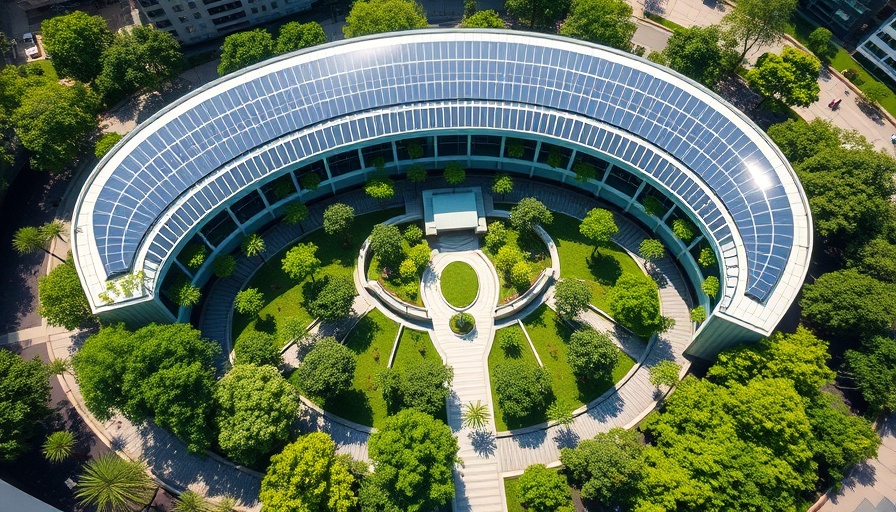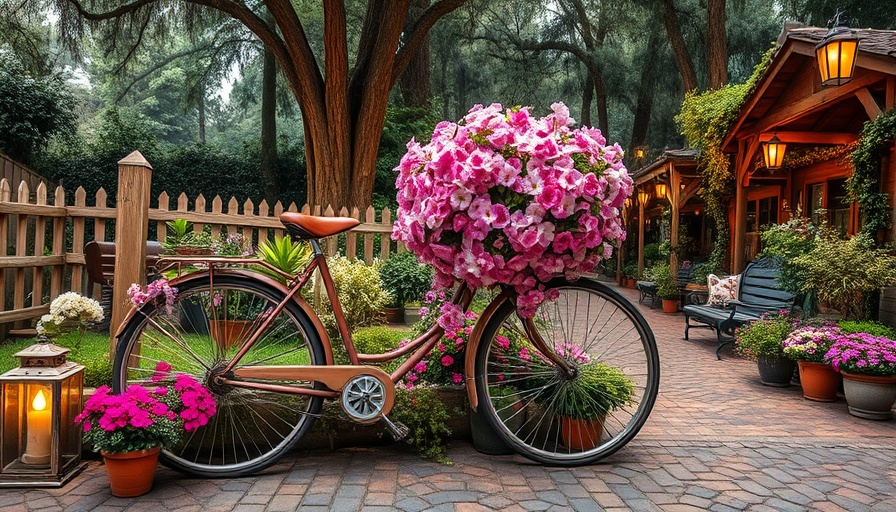
Embracing Edible Landscaping: Transform Your Small Yard in 2025
When we think of gardening, the image often conjured is that of sprawling landscapes dotted with lush rows of produce. However, the renaissance of small yard gardening in 2025 is fundamentally changing that narrative. With innovative trends that incorporate aesthetics alongside functionality, even the smallest spaces can become thriving edible landscapes.Through edible landscaping, fruits, vegetables, and herbs can coexist beautifully with traditional ornamental plants, capturing the essence of a productive garden while delighting the eye.
In Stop Wasting Your Small Yard! Grow Your Dream Edible Garden with These 2025 Trendy Tips, the video highlights innovative gardening techniques that maximize food production in limited spaces, which inspired deeper exploration into these transformative ideas.
Innovations in Vertical Gardening
One of the most exciting developments in small yard gardening is the rise of vertical gardening. In 2025, urban gardeners are leveraging space by growing upwards instead of outwards. Utilizing structures like trellises, living walls, and tiered planters, they can cultivate a diverse array of crops—from climbing beans to strawberries—without sacrificing valuable horizontal space. This method not only enhances air circulation but also reduces pest issues due to decreased soil exposure. If you're working with a compact yard or balcony, vertical gardens represent a stunning way to maximize your growing potential.
Building a Sustainable Garden
At the heart of small yard gardening trends is sustainability. In 2025, gardeners are more eco-conscious than ever, adopting practices that promote biodiversity and reduce waste. Sustainable gardens utilize native plants and organic materials that thrive on minimal care while also conserving resources. If you're looking to create a resilient landscape, consider implementing rainwater harvesting systems or drought-resistant crops. This commitment to sustainability benefits not only your garden’s health but also contributes positively to the planet.
Creating Wildlife-Friendly Spaces
Gardening isn’t just about food; it is also about fostering local ecosystems. 2025 sees gardeners incorporating wildlife-friendly designs into their edible landscapes, with a focus on native plantings that attract essential pollinators such as bees and butterflies. Beyond just growing fresh produce, by integrating herbs and flowering plants, you create habitats that enhance biodiversity. Adding features such as birdhouses and water sources nourishes local wildlife, creating a balanced ecosystem that boosts your garden’s productivity while enriching your neighborhood's natural environment.
Water-Conserving Plants and Systems
As climate concerns grow, so does the need for water conservation strategies in gardening. Drought-resistant plants are essential in 2025 small yard gardens, allowing you to maintain productivity while using minimal water. By selecting Mediterranean herbs and native varieties adapted to local conditions, you can cultivate an edible garden that thrives even under water constraints. Additionally, employing smart irrigation techniques such as drip systems and smart watering schedules ensures your garden remains lush and vibrant.
The Rectitude of Container Gardening
For homeowners with limited space but a desire to grow their own food, container gardening is the go-to solution. Containers not only offer versatility but also simplify pest management, as they reduce soil-borne diseases through elevated growth. In 2025, stacking containers or using raised beds enables you to grow a variety of crops—including tomatoes, peppers, and greens—without compromising your available area.
Hybrid Designs for Beauty and Function
In the quest for maximizing small yard gardens, hybrid designs have emerged as an appealing trend. This approach integrates edible plants with ornamental landscaping, creating a visually stunning yet purposeful garden. Flowering vegetables and colorful herbs intermingled with traditional flowers not only attract pollinators but also ensure year-round visual interest while yielding fresh produce. Such designs allow homeowners to enjoy both aesthetics and bounty, skillfully balancing beauty with utility in their small spaces.
The Importance of Seasonal Crop Rotation
Lastly, effective gardening in a small yard is about maintaining soil health; this is where seasonal crop rotation comes into play. By strategically rotating plants according to their nutrient needs, gardeners not only enhance soil fertility but can also improve resilience against pests. In 2025, innovative schedules tailored for compact spaces are proving invaluable in achieving continuous harvests. This simple practice ensures your garden remains productive, allowing you to cultivate a variety of crops throughout the year.
In Stop Wasting Your Small Yard! Grow Your Dream Edible Garden with These 2025 Trendy Tips, the video highlights these exceptional gardening trends that tap into the creative potential of small spaces. As we explore ways to transform limited yards into edible sanctuaries, we discover the limitless possibilities for gardening successes in 2025. Allow these trends to inspire you to create your own personal haven where beauty meets bounty. So roll up your sleeves, get your tools ready, and let’s make this the year you cultivate your dream garden!
 Add Row
Add Row  Add
Add 



Write A Comment